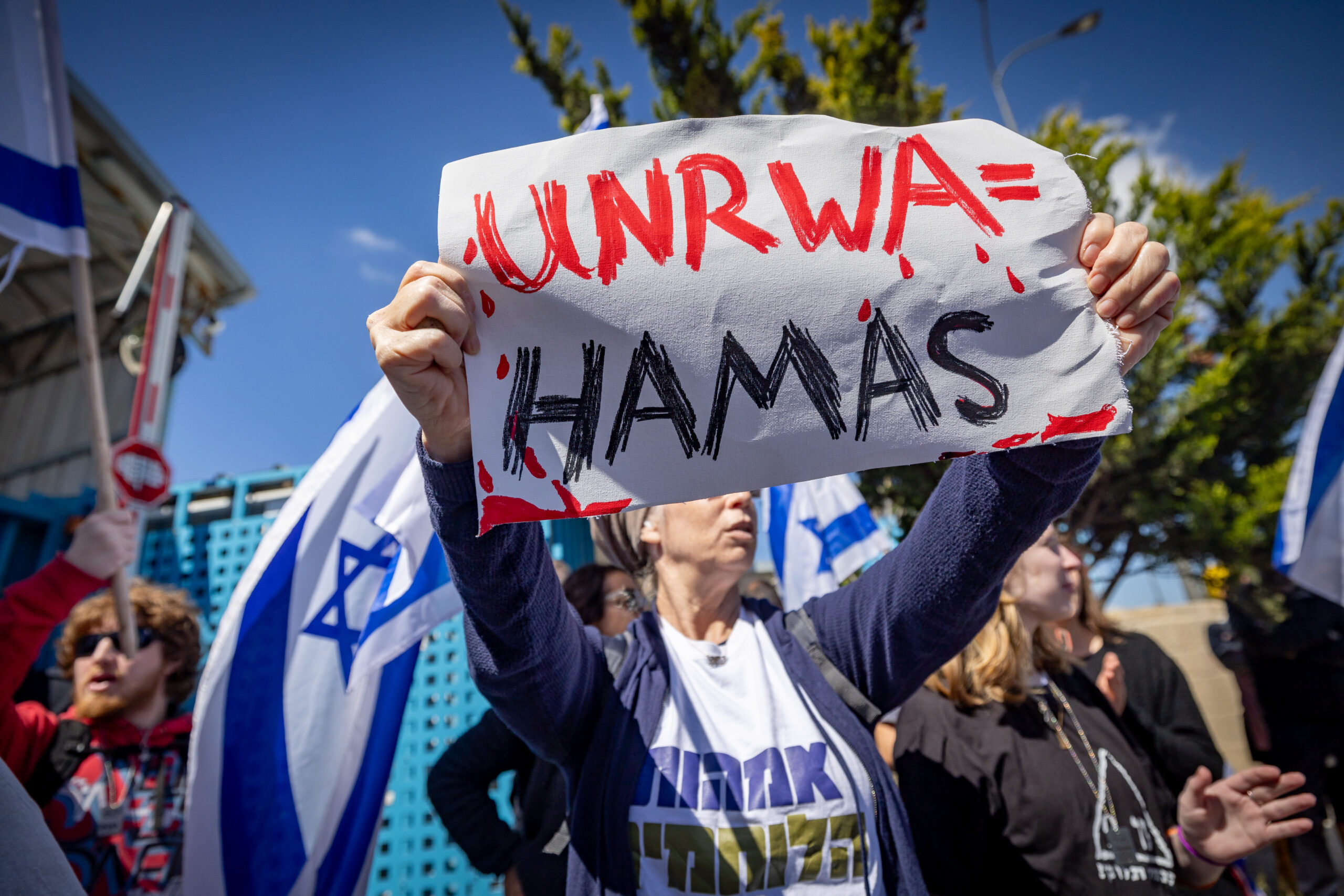Israel has repeatedly presented detailed intelligence showing that the United Nations Relief and Works Agency (UNRWA) is not simply operating alongside Hamas in Gaza, but is structurally intertwined with it—through its schools, its payroll, its senior staff, and even among employees who took part in the October 7 massacre. Despite these findings, the United Nations continues to dismiss or minimize the evidence, relying on internal reviews that frame Hamas infiltration as either unproven or unavoidable, while UNRWA remains positioned to resume a central role in Gaza aid distribution.
A recent investigation by the Washington Free Beacon revealed that a confidential U.N. report reviewed by its reporters acknowledged that Israeli intelligence linking UNRWA staff to Hamas was likely authentic. Despite this, the U.N. Office of Internal Oversight Services declined to dismiss ten of the nineteen UNRWA employees Israel identified as involved in the attack, including an alleged Hamas platoon commander. The U.N. report was not released publicly, and the U.N. has cited its own conclusions to insist that claims of widespread UNRWA-Hamas collaboration lack substantiation.
Israeli intelligence records paint a sharply different picture. According to Israel, at least 1,462 of UNRWA’s 12,521 employees in Gaza—roughly 12 percent—are members of Hamas or other designated terrorist organizations. Israel has identified at least 18 UNRWA employees who actively participated in the October 7 assault. Out of 546 principals and deputy principals in UNRWA schools, 80 were found to be members of terrorist groups. Israeli officials further identified 75 UNRWA employees as part of the Izz al-Din al-Qassam Brigades, Hamas’ military wing. In some cases, UNRWA school buildings were used to conceal tunnels, weapons depots, and command centers.
The Free Beacon report shows how this intelligence was set aside. In one case, Israeli phone intercepts recorded an UNRWA employee helping his son infiltrate Israel and take part in the kidnapping of an Israeli woman. The U.N. report acknowledged the authenticity of the recording but dismissed it, characterizing the father’s involvement as an expression of “parental outrage.” In another case, texts to a staff member instructing him to bring two anti-tank missiles to a designated location were dismissed because the employee “denied involvement.” A senior congressional aide familiar with the investigation told the Free Beacon that “the United Nations went in with a certain outlook” and had no interest in evidence that contradicted its narrative.
UNRWA’s entanglement with Hamas extends far beyond October 7. Classroom materials in UNRWA schools in Gaza and Lebanon have been documented as teaching hostility toward Israel and glorifying shahid (martyr) culture. A 2022 UN Watch review identified dozens of UNRWA educators publicly praising Hamas attacks on social media. These findings match the Israeli assessment that Hamas controls the educational environment through school leadership, teacher training, and curriculum guidelines.
Humanitarian aid also flows through Hamas-controlled channels. UNRWA salaries are paid in U.S. dollars, but Gaza residents cannot freely convert foreign currency. Hamas controls the exchange process, effectively taxing every paycheck and transferring international funding directly into its operational budget. According to Israeli government documentation, Hamas additionally seized and resold UNRWA humanitarian supplies, creating black markets for flour, fuel, and medical goods.
The United Nations does not classify Hamas as a terrorist organization. This classification gap shapes every part of the UN’s response. Without defining Hamas as a terrorist actor, UNRWA’s staff being embedded within Hamas-controlled neighborhoods and institutions is treated as a social inevitability rather than a security breach. The U.N. panel that reviewed UNRWA in April 2024 stated that the agency’s “tools for neutrality” were strong and that vetting procedures might require “refinement,” but did not address the structural issue of Hamas rule in Gaza. The panel said Israel did not provide supporting documents in time for review. At the same time, Israeli officials argued that cooperation is impossible when the U.N. does not recognize the core nature of Hamas.
The Bible provides a principle that speaks precisely to accountability in public authority. “Woe to those who call evil good and good evil, who turn darkness to light and light to darkness” (Isaiah 5:20). The Sages explain that moral clarity is not merely a private virtue. Public institutions carry responsibility for the outcomes of their choices. When international bodies excuse violence to preserve administrative calm, they contribute to further bloodshed.
The dispute over UNRWA is not procedural. It concerns the international system’s willingness to confront Hamas rule in Gaza as a governing reality. Ignoring the infiltration of UNRWA means the same militant networks will continue to operate under humanitarian cover. When the International Court of Justice ruled that UNRWA should resume managing aid into Gaza, it did so based on a U.N. report that minimized Hamas penetration. The result is a policy built on denial.
Israel continues to insist that the evidence is clear and that October 7 exposed the cost of refusing to confront Hamas’s entrenchment in civic institutions. Washington and European capitals are debating future funding. The United States Agency for International Development Office of Inspector General has opened its own investigation, one that may finally separate UNRWA’s civilian functions from Hamas’ military infrastructure.




